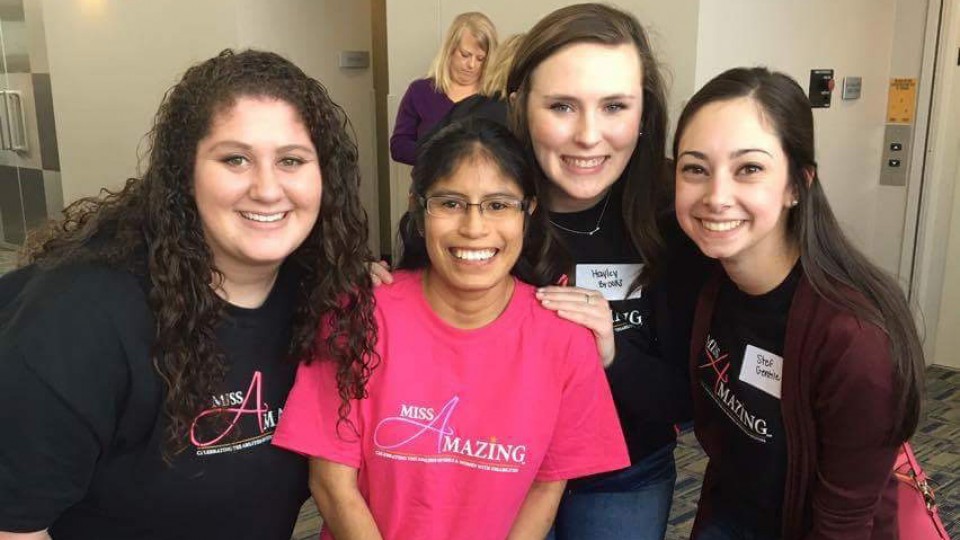· 4 min read
Pageant experience inspires new sign language club

A roaring crowd she could not hear shook 21-year-old Carmita Wilson.
The only people who knew why were three University of Nebraska-Lincoln students who were paired with Wilson after volunteering to assist with the Iowa Miss Amazing pageant last January. Using American Sign Language lessons they learned in the classroom, the senior special education and communication disorders students were able to engage with Wilson and help assuage her fears of being in large crowds.
In that moment, the Nebraska students realized the necessity in bridging the communication gap between the deaf community and the rest of the world. And, to help bridge that gap on campus, the students — Hayley Brooks, Stefanie Gentile and Aly Lerman — have launched a new American Sign Language Club that will meet for the first time on Sept. 7.
A primary goal of the club is to help students gain more real-world sign language skills.
Having only used sign language in classroom settings before, the pageant proved a difficult test for the students’ communication skills, Gentile said.
“In class, we sign about a specific topic,” Brooks said. “When we were there and had to think through things to communicate with (Wilson), it was really challenging.”
Prior to the pageant, Lerman had taken four semesters of sign language instruction. Still, with that base of knowledge, she struggled in communications with Wilson.
“I thought I knew way more sign language than I actually did,” Lerman said. “It was hard to use it in a practical setting. That is why we started the club. We’re hoping to learn more of the conversational side of it, as opposed to the academic side.”
The club goal is to only communicate via sign language during its meetings. And, some of the meetings will be held at coffee shops or restaurants, allowing members to apply sign language to real-life situations, such as ordering food.
The club also hopes to provide opportunities to interact with and build awareness about the deaf community.
“People don’t realize, without hearing, you totally disconnect from people if they don’t know how to communicate with you,” Gentile said. “If there is any way, through taking a class or starting a club, that we can help someone else, I think it is worth it.”
As seniors, the student organizers also are planning to keep the club going after they graduate from the university.
“We want to pass on the legacy after we graduate,” Lerman said.
The university has not had a sign language club for more than 10 years. The previous club, called Friends of the Deaf Community, was for graduate students studying deaf education. Amy Willman, lecturer in special education and communication disorders, said the club disbanded after the university started offering online classes to deaf education students.
“The main reason for starting this new club is to allow students the chance to practice their ASL skills,” Willman said. “That’s important since ASL (uses) receptive and expressive skills. If you don’t practice them, you will completly forget how to sign.”
Brooks, Gentile and Lerman plan to work in collaboration with Lincoln Public Schools’ deaf awareness events. For those events, club members will meet at off-campus locations and engage in conversations with hearing impaired students.
The club is open to anyone in the campus community. Prior sign language knowledge is helpful, but not necessary.
The American Sign Language Club will meet at 6:30 p.m. on the first Wednesday of each month starting Sept. 7. Most meetings will be in the Barkley Memorial Center, Room 131.
For more information about the club, click here. A list of sign language courses offered by the university is available online.
The university offers a variety of services for students with disabilities. For more information on available services, click here.







